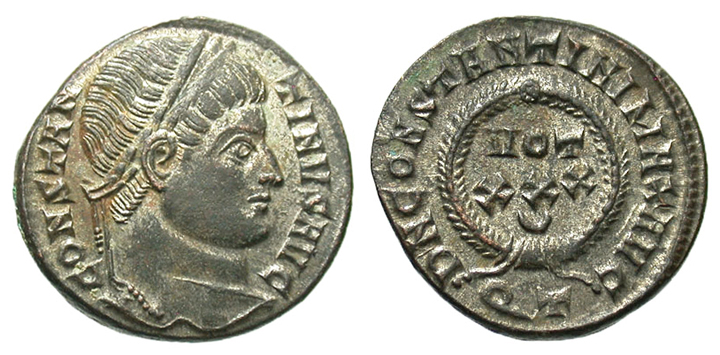

Reproduction of a roman coin representing Constantine the Great 330 AD. The edict not only protected Christians, but gave freedom of religion to all, allowing anyone to worship whatever they wanted. It also returned the property which had been taken away from them. Text: Alexandria RIC VIII 32 : Divus Constantine I AE Follis. Constantine veiled, driving galloping quadriga right, the hand of god reaching down to him. DV CONSTANTI-NVS PT AVGG, veiled head right. This stopped people from punishing Christians, who had often been martyred, or killed for their faith. Constantine I, AE commemorative follis, AD 337-340. Saint Constantine was the 57th Emperor of the Roman Empire ruling from 306 to 337 AD and the founder of the. The edict said that Christians could believe what they wanted. Constantine the Great Coin Pendant (Vermeil). In February 313, Constantine met with Licinius in Milan where they made the Edict of Milan. As emperor, he named the city Constantinople, which means "City of Constantine" in Greek.Constantine is perhaps best known for being the first Christian Roman emperor. Bronze 19mm (3.24 grams) Sirmium mint 324-325 A.D. Theresa Gross-Diaz, Coin Showing Emperor Constantine the Great, in Ancient Art at the Art Institute of Chicago, special. He made the previously named city Byzantium (now Istanbul, Turkey) capital of the whole Roman Empire. CONSTANTINE I the GREAT RARE Ancient Roman Coin Victory Over SARMATIANS i39763. Handmade antiqued Constantine coin earrings.Ĭonstantine I (27 February 272 – 22 May 337 AD) was a powerful general who reigned over the Roman Empire as emperor until his death.


 0 kommentar(er)
0 kommentar(er)
